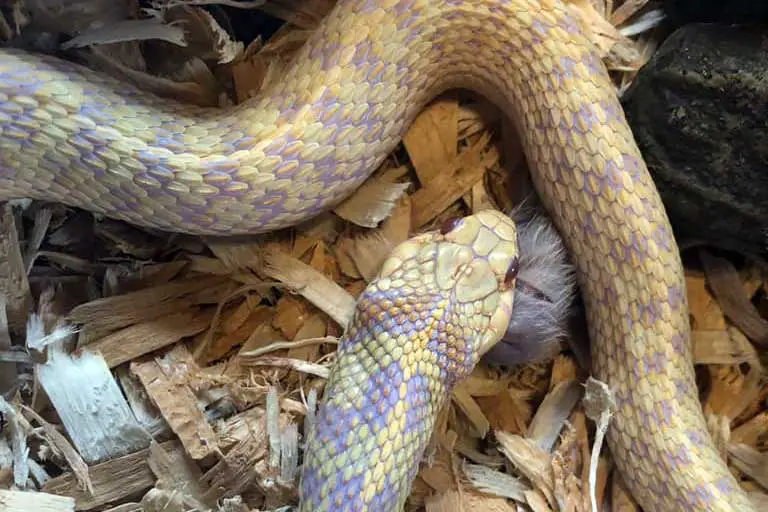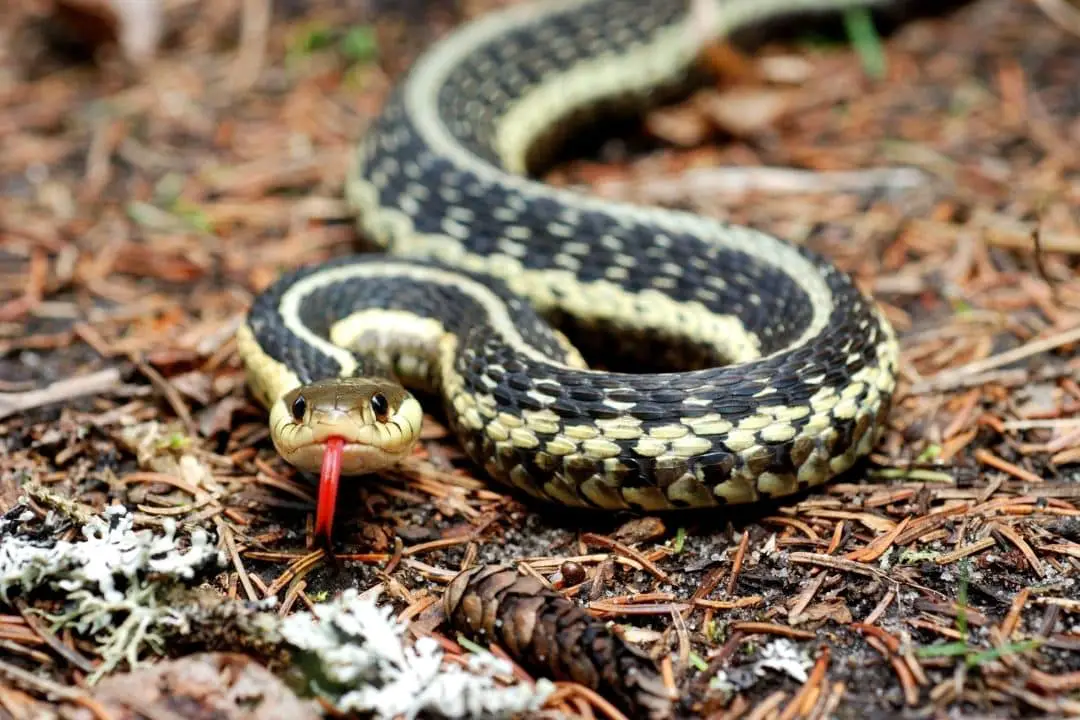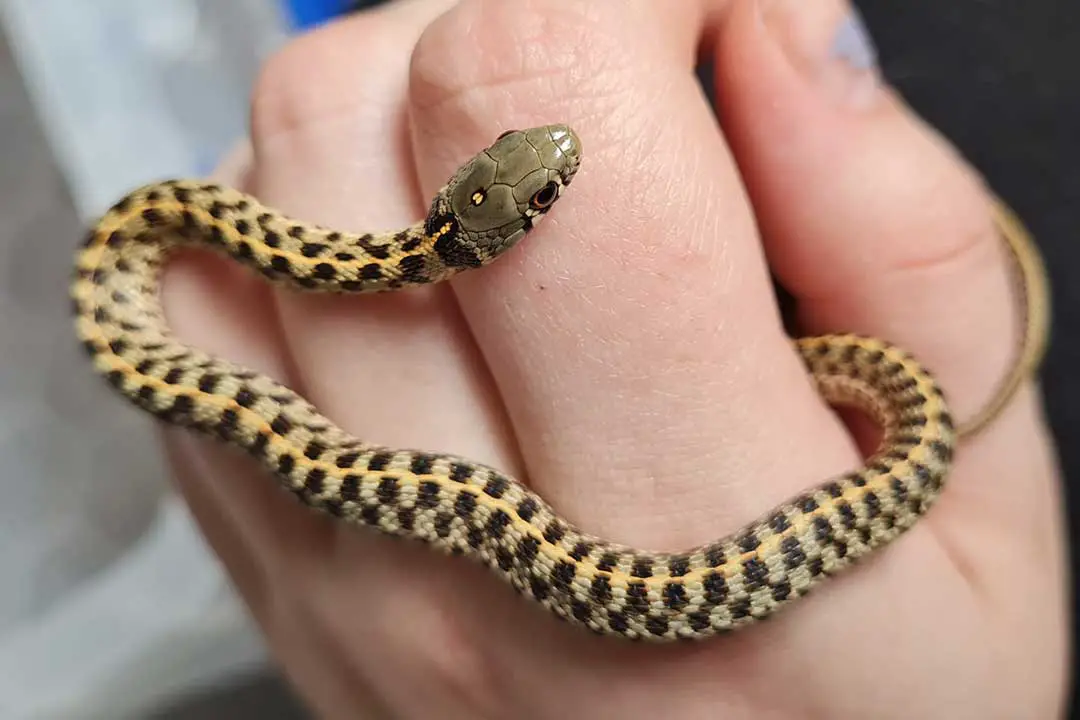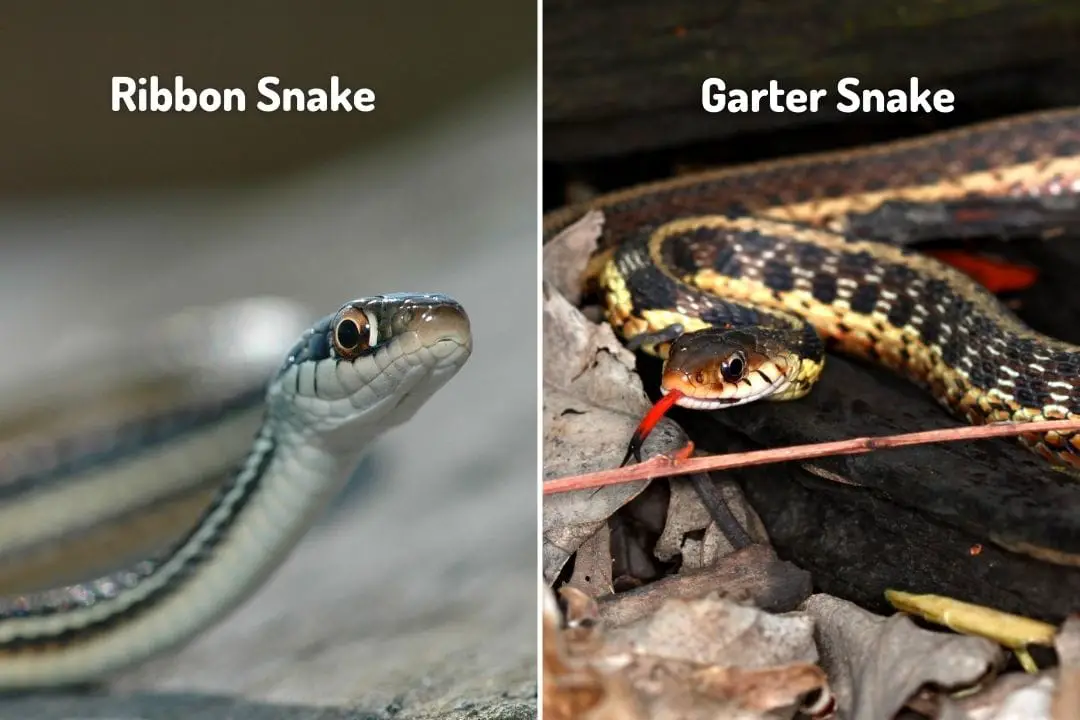Garter snakes are a genus (Thamnophis) of over 30 species all known by the common name of garter snake.
Many species are kept in captivity as well, so you can find multiple species of garter snake for sale.
While some things like exact diet and appearance depend on the species, garter snakes do have a few common traits including that the genus as a whole has a wide diet.
If your pet garter snake isn’t eating, this general guide can help you figure out why and how you can fix it.
Remember that if your snake ever starts losing weight quickly, you must take it in to the vet. Sudden weight loss is a sign of illness that needs immediate care.
Here are some of the reasons why your Garter Snake is not eating:
1. Wrong Prey
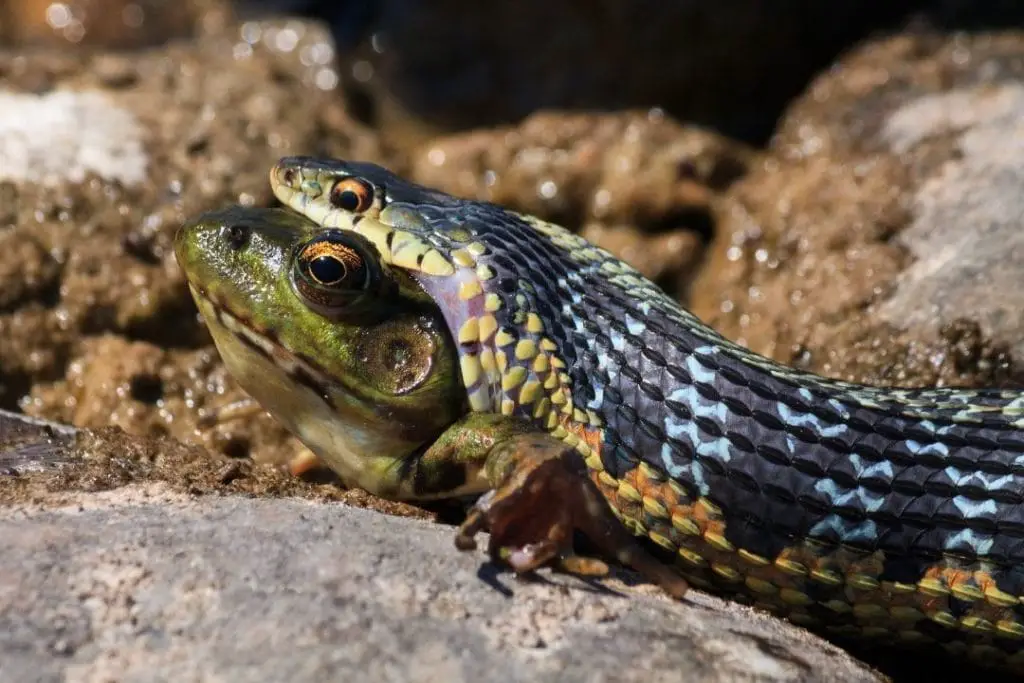
The single biggest reason why your garter snake may refuse to eat is what you are offering it. If your snake is new, you may be offering it a different diet than the snake is used to. It may not recognize the prey you are offering is food. Some species may also refuse certain prey.
A few species from California specialize in eating newts. You may need to scent the prey you want to feed your snake with the type of prey it prefers.
Snakes rely more on smell to identify prey than their eyesight. If you are trying to switch your snake over to mice, they may refuse. Many places sell what is called frog juice.
This liquid can be used to scent mice and convince a reluctant snake to eat. If you are offering worms, they may be too large or not moving enough.
If you cut up nightcrawlers for your snake, try cutting into no smaller than quarters. You want the pieces to be moving. If your snake refuses to eat anything other than amphibians, you can buy a product called Reptilinks that is made with frogs.
This can help get your snake eating properly if it is stubborn. Some prey types like red wigglers are toxic to garter snakes. If they manage to keep it down it will kill them.
Otherwise, they may refuse or regurgitate if they are offered a red wiggler. Other prey like goldfish will be taken but will kill your snake quickly.
2. Parasites
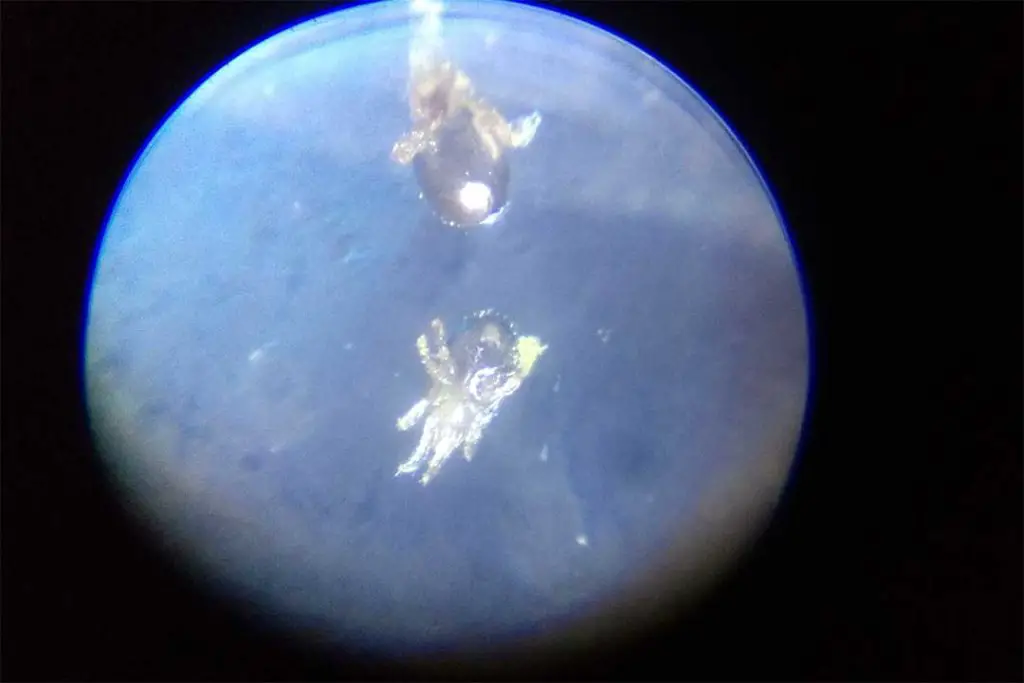
Parasites can kill a snake’s appetite. Many live prey options like frogs and fish have heavy parasite loads. While wild snakes have the immune system to handle this, captive snakes may suffer.
If your snake eats live prey and loses its appetite suddenly, have a test done for parasites while you are ruling out other causes. You should also watch for external parasites.
Ticks are easy to spot, but mites can be missed by new keepers. Mites look like little black specks around the size of a poppy seed.
You may spot them easily on lighter snakes. Garter snakes will also try to soak to get rid of mites. Be sure to check the water dish for any potential mites floating in the water dish.
3. Seasonal and Biological Changes
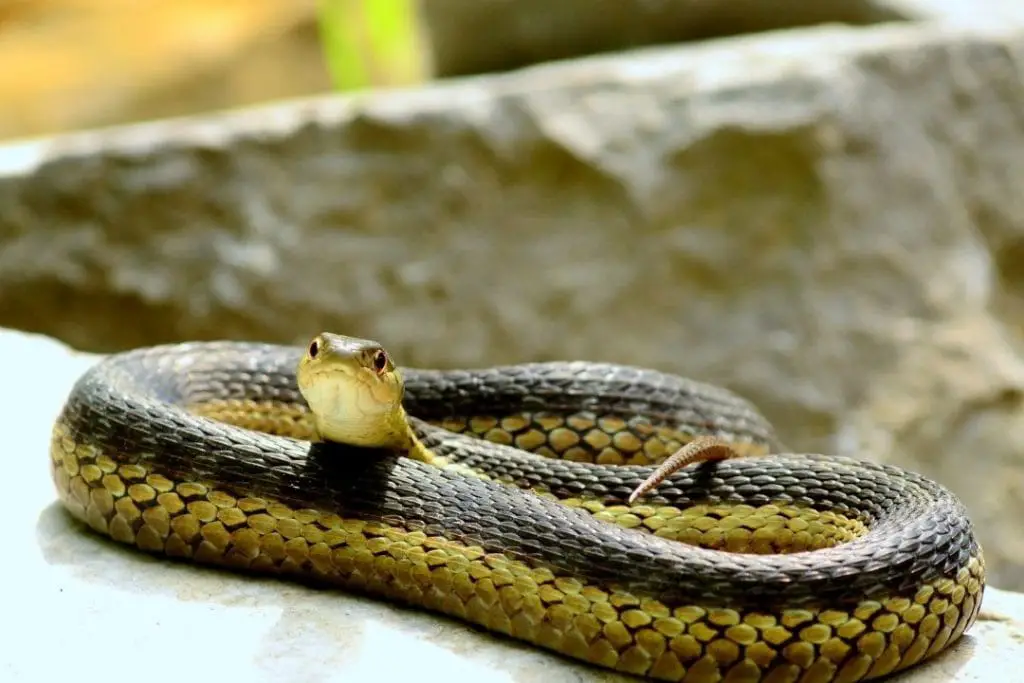
Garter snakes can go off their food naturally. All snakes will refuse to eat when the temperatures drop below the temperature needed for proper digestion.
In colder climates, garter snakes will refuse to eat once fall temperatures arrive. This is so that they will have a completely cleared digestive system by the time they are ready to brumate.
Snakes will also refuse to eat when they are preparing to shed. Most garter snakes will be much less active once their eyes go cloudy.
Snakes that are getting ready to breed may also refuse meals. Gravid females may also only take smaller meals or cease eating altogether once the young reach a certain size since she will not have the room for food inside her anymore.
4. Poor Husbandry
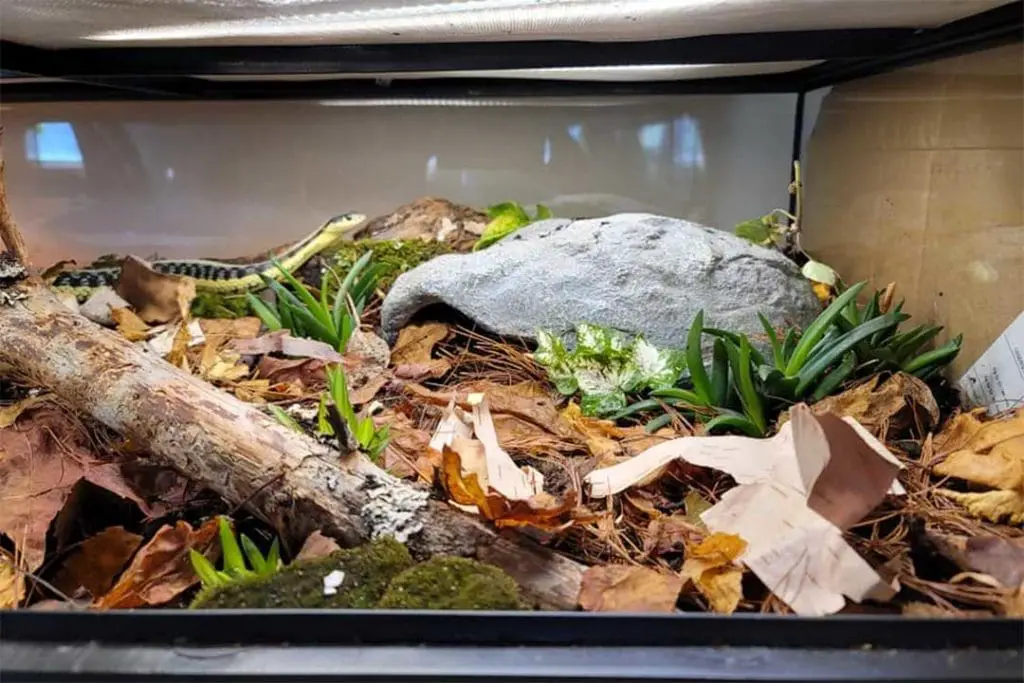
If your temperatures and humidity are off, your garter snake may refuse to eat. Low temperatures can make it impossible for your snake to digest a meal before it starts to rot.
This can sicken or kill a snake very quickly. Always check the temperatures on your thermometer for the air temperature and use a heat gun to check how warm the surfaces are. You should also keep an eye on humidity.
If you notice your snake drinking frequently, rarely urinating, or having problems shedding it likely needs a higher humidity level than you are offering. Try misting every day or so and use a digital hygrometer to monitor the changes.
Make sure your enclosure is setup properly for this species, you can read my complete care guide for garter snakes.
5. Illness
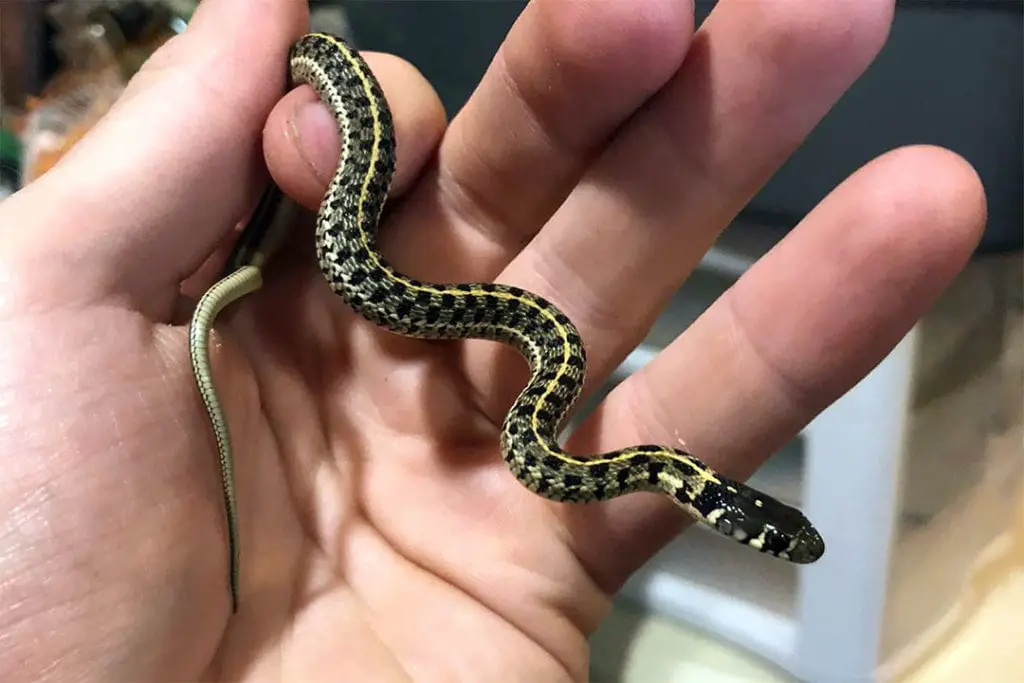
The final major cause of a lack of appetite is an illness. Many illnesses that garter snakes are vulnerable to have lack of appetite as one of the earliest symptoms.
Mouth infections are painful and your snake may refuse to eat. You can tell if your snake has a mouth infection by looking for blood or pus in the mouth.
Respiratory infections make it hard for your pet to breathe and it will likely refuse to eat. You should listen for wheezing or clicking as your snake breathes.
You may also see excess mucus in the mouth or coming out of the nostrils. Your snake may also breathe with its mouth open. If you see any of these signs, take your snake in immediately.
Infections are easy to treat if caught early. They can also kill your snake very quickly. If your snake ever refuses to eat or suddenly loses weight, be sure to take it in.
Conclusion
Garter snakes are typically ravenous feeders, but they can go off their food. Always make sure you know exactly why your snake has stopped eating.
Head to the vet if you can’t figure it out or your snake misses several meals in a row. If you have any questions or comments, please leave them below.
